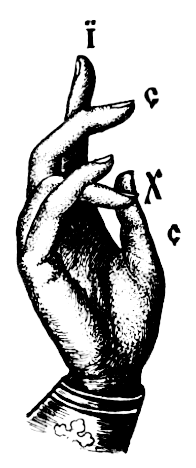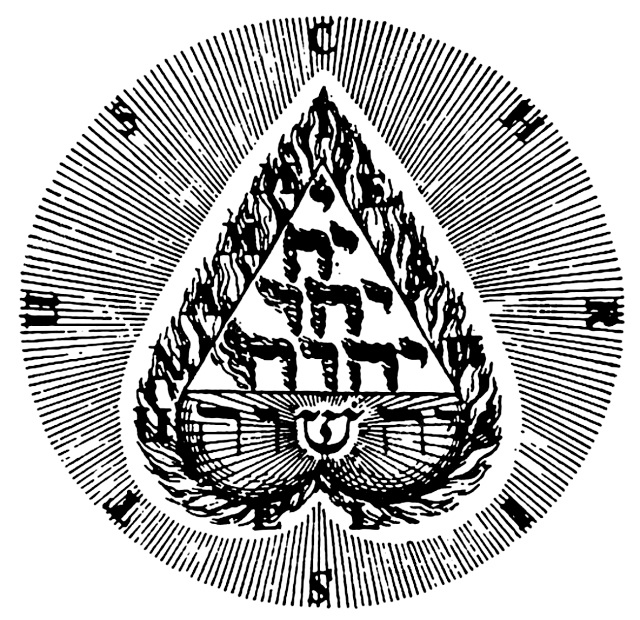The Secret of Yom Kippur (Kabbalah Lesson)
- טימותי לורנס
- Sep 22, 2021
- 6 min read
Updated: Dec 8, 2022
In this is great Kabbalah lesson about the secret of Yom Kippur, which was observed just last week. Brother Yirah goes through the Yom Kippur section in The Zohar and explains the details in relation to the tree.
Yom Kippur, known as The Day of Atonement, is the holiest day of the year in Judaism. It's all about atonement and repentance. I've overserved this holiday for the past couple of years and I know that it brings great blessings, as it's the one day out the entire year that we can all atone for our sins and receive forgiveness.
Of course, as a disciple of Yeshua, I know that we don't have to wait for this holiday in order to receive forgiveness, as Yeshua has already made the ultimate sacrifice for the entire world. All we have to do is repent for our sins and fly straight afterwards. However, that being said, I also know that Yeshua was Jewish and he would've observed this holiday, so that's good enough reason for me to do the same. It's all about developing a close relationship with The Father, to truly cleave to him and strive to become one with him. G*d in human form, Yeshua was the epidemy of whom we should all strive to be like; he was the ultimate role model for humanity and if we all follow his teachings and live by the examples that he set for us, this world would be such a beautiful place indeed.
Below is the original text from The Zohar, so you can better follow along with this lesson.
120. Yom Kippur
Introduction / Commentary:
The Zohar tells us that Yom Kippur is from the Tree of Life, where no evil has any part. On that day even those people who are under a sentence of
judgment are forgiven. We hear about the difference between vows and oaths, and about the iniquities of Yisrael that are purified or whitened
through repentance. We learn that on Yom Kippur a Shofar raises up a voice for freedom. There are three grades of worship on that day: thought,
speech and deed.
807
"And you shall have on the tenth day of this seventh month"
which is the month of Tishrei, "a holy gathering" (Bemidbar 29:7),
which is the Day of Atonement, which is the tenth, which is Yud, and
these are the Ten Days of Repentance, and five prayer services were
ordained for it in order to join the Yud with the Hei, NAMELY,
CHOCHMAH WITH BINAH. What is the meaning of "holy gathering"?
It is to differentiate it from other days when secular work is permitted
which is why scripture says: "you shall not do any work" (Ibid.).
808
And those days on which secular work may be done are from
the side of the Tree of Knowledge of Good and Evil, that turned from
a rod into a serpent and from a serpent back into a rod, for each
person according to his deeds, and this Metatron is rod, while
Samael IS serpent. But on this day, which is the Day of Atonement
that is called 'holy', the Tree of Life is in control, and no devil nor evil spirit joins with it, and from its side "nor shall evil dwell with
you" (Tehilim 5:5), BUT IT IS THROUGHOUT GOOD. And this is why
in it, in the Tree of Life, the slaves find rest and go out to freedom,
and emerge from their chains.
809
Those over whom there is a verdict, A VERDICT NOT TO BE
CHANGED under vow or oath, it was decreed for this reason that the
following shall be recited: "All vows, bonds...they shall all of them be
released and annulled. They shall not be binding, nor shall they have
any power." BUT THE VERDICT SHALL BE VOIDED FROM THEM.
And this is why the vow is in the name of the Yud Hei Vav Hei, which
is Tiferet, while the oath is in the name of Adonai, which is Malchut,
for they caused their own exile BY THEIR SINS. AND NOW, by means
of Chochmah and Binah, 'they will be released and annulled; they
shall not be binding, nor shall they have any power'. "And all the
congregation of the children of Yisrael shall be forgiven" (Bemidbar
15:26). Chesed is water, Gvurah is fire, and Tiferet is air, AND SINCE
THE VOWS ARE IN TIFERET, WHICH IS AIR, the sages of the
Mishnah therefore taught: release from vows hovers in the air, FOR
THE RELEASE FROM CHOCHMAH AND BINAH HOVERS IN THE AIR,
WHICH IS TIFERET, AND FROM THERE ANNULS THE VOW.
810
And since the oath is from Malchut, which is below the vow
WHICH IS TIFERET, they taught that the vows are above the oaths,
and they also taught: Everyone who swears an oath is as though he
swears on the king himself, and everyone who vows a vow is as
though he does so on the life of the king himself. The king himself
REFERS TO Adonai, WHICH IS MALCHUT. The life of the king
REFERS TO the Yud Hei Vav Hei, WHICH IS ZEIR ANPIN, FROM
WHOM THE LIFE FLOWS TO THE KING, WHICH IS MALCHUT. And
for this reason, IT IS WRITTEN: "If a man vow a vow to
Hashem" (Bemidbar 30:3), WHICH IS ZEIR ANPIN.
811
And even thus, there is another secret: The life of the king
refers to Chochmah, as it is written: "wisdom gives life to those who
have it" (Kohelet 7:12). THEREFORE everyone who vows on the Yud
Hei Vav Hei, which is Tiferet, it is as if he vowed upon Chochmah OF
ZEIR ANPIN, which is THE YUD HEI VAV HEI IN THE FILLING OF
ALEPHS, THUS: Yud Vav Dalet; Hei Aleph; Vav Aleph Vav; Hei Aleph,
which is the life of the king, WHICH IS THE LIFE OF ZEIR ANPIN. And
everyone who swears an oath on Adonai is as though he swore on
the king himself. This is because he himself (Heb. atzmo) is upper
Mother, NAMELY, BINAH, AND IT IS as though he had sworn on her,
namely, on "as it were the very (Heb. etzem) heaven for
clearness" (Shemot 24:10), NAMELY, THE MOCHIN OF MALCHUT.
For from the aspect of Chesed, MALCHUT IS CALLED "bone (Heb.
etzem) of my bones" (Beresheet 2:23). But from the aspect of
Gvurah, Malchut is called "and flesh of my flesh" (Ibid.), and in
Chochmah, which is the life of Tiferet, NAMELY, ITS MOCHIN, it,
TIFERET, rises up to be called 'man', as it is written: "the beauty
(Tiferet) of a man" (Yeshayah: 44:13). FOR TIFERET IS CALLED
'MAN' WHEN IT HAS THE MOCHIN OF CHOCHMAH, WHICH IS THE
SECRET OF WHY HE IS CALLED BY YUD HEI VAV HEI FULLY
SPELLED WITH ALEPHS, THAT HAS THE NUMERICAL VALUE OF 45.
812
And it is said about the Day of Atonement: "and you shall afflict
your souls" (Bemidbar 29:7) AND ALSO: "in the seventh month, on
the tenth day of the month, you shall afflict your souls" (Vayikra
16:29). And five afflictions were decreed for it, so that small Hei,
WHICH IS MALCHUT, should be purified in upper Hei, WHICH IS
BINAH, OF WHOSE LEFT COLUMN, THE AFFLICTIONS ARE DRAWN,
which are five prayers, to establish in Yisrael: "though your sins be
like scarlet, they shall be as white as snow" (Yeshayah 1:18). And
this is the secret of the crimson colored strip, WHICH THEY TIED TO
THE DOOR OF THE SANCTUARY FROM INSIDE, WHICH, WHEN THE
HE-GOAT REACHED THE WILDERNESS, TURNED WHITE. All the
iniquities of the House of Yisrael reach to Malchut; and Repentance,
which is Binah, purifies (whitens) them, for it is written about it,
ABOUT MALCHUT: I AM HASHEM "that remains among them in the
midst of their uncleanness" (Vayikra 16:16). And the four garments
of white and the four garments of gold for apparel are THE SECRET
OF Yud Aleph Hei Dalet Vav Nun Hei Yud, WHICH IS THE
COMBINATION OF THE LETTERS OF THE YUD HEI VAV HEI AND
THOSE OF ADONAI. FOR THE FOUR GARMENTS OF WHITE ARE
THE SECRET OF THE FOUR LETTERS OF THE YUD HEI VAV HEI
WHILE THE FOUR GARMENTS OF GOLD ARE THE SECRET OF THE
FOUR LETTERS OF ADONAI.
813
And it was decreed that a Shofar be sounded on the Day of
Atonement, to raise up a voice, which is Vav OF THE YUD HEI VAV
HEI, NAMELY, ZEIR ANPIN, for freedom, WHICH IS BINAH. For it is
said about it: "In all their affliction he was afflicted (lit. 'there was
affliction for (Heb. lo) him')" (Yeshayah 63:9). 'LO' IS with Aleph and
Vav, that is, in how it is pronounced and written, FOR IT IS SPELLED
WITH ALEPH (NO), ALTHOUGH PRONOUNCED WITH VAV (FOR
HIM). FOR "IN ALL THEIR AFFLICTION" ALLUDES TO FIVE
AFFLICTIONS AND THE JUDGMENTS WHOSE SOURCE IS IN BINAH,
IN ITS LEFT COLUMN. AND IN THE SECRET OF THE SHOFAR
BLOWING, ZEIR ANPIN IS ALSO RAISED UP THERE TO BINAH, AND
THIS IS WHY THERE ARE TWO VERSIONS OF THE TEXT, AS
WRITTEN AND AS READ, WITH AN ALEPH AND WITH A VAV,
WHERE THE ALEPH ALLUDES TO BINAH, IN THE SECRET OF
TEACH (HEB. ALEPH) BINAH, AND THE VAV ALLUDES TO ZEIR
ANPIN THAT ASCENDED TO BINAH. And worship on the day of
Atonement is conducted at length and comprises three grades:
thought, speech, and deed.
Much Love and Blessings!


















Comments